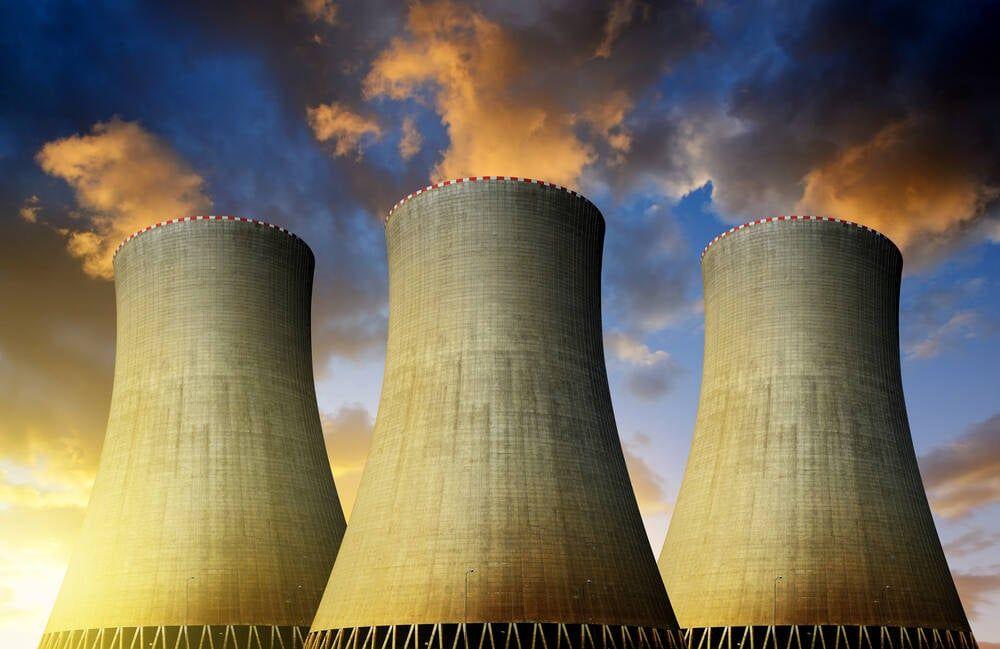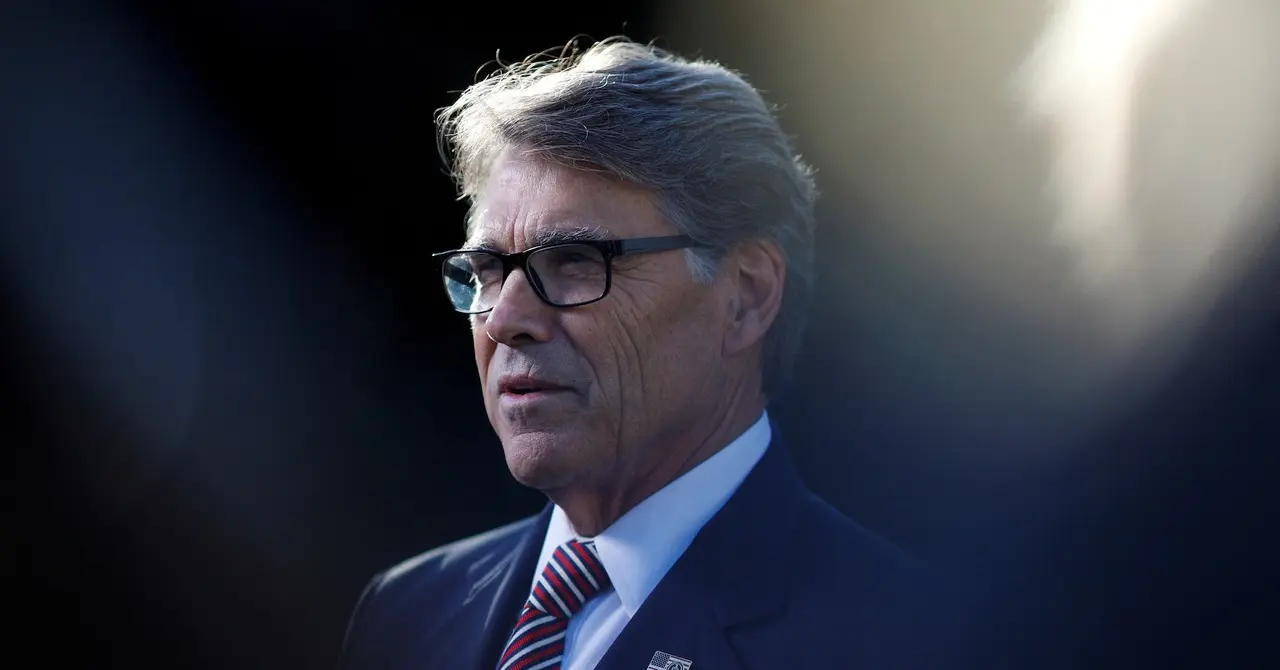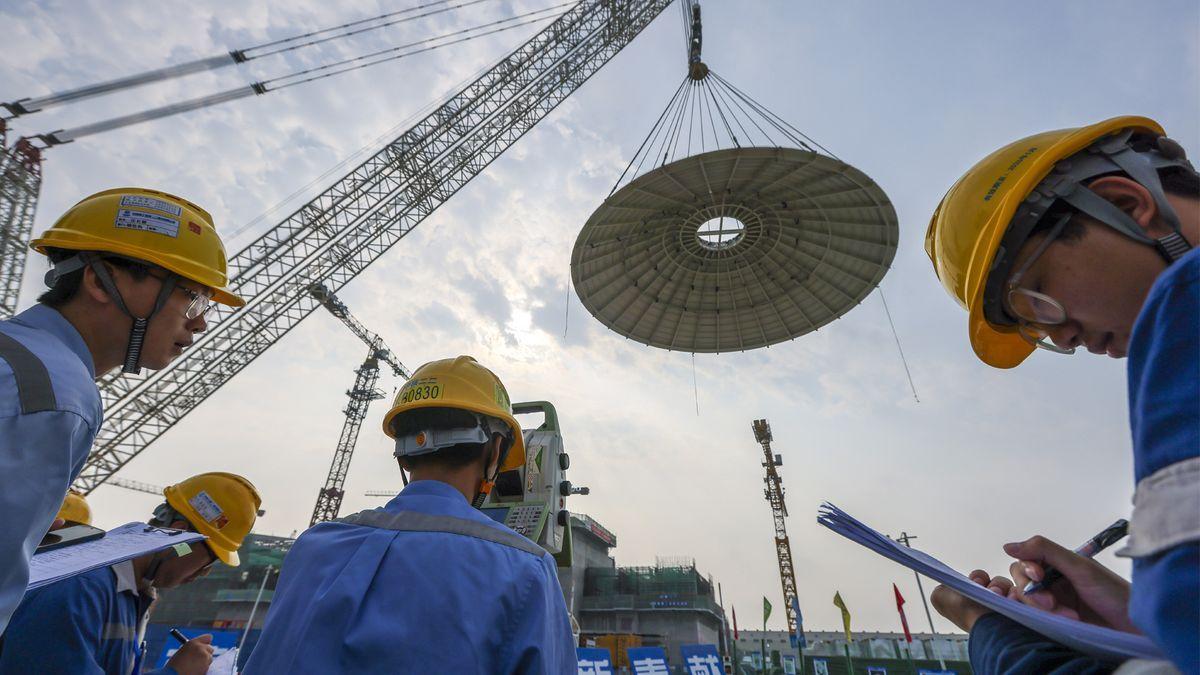Fermi America's 'HyperGrid': Nuclear-Powered AI Data Center Planned for Texas
2 Sources
2 Sources
[1]
Hyundai to help build nuclear-powered datacenter in Texas
Fermi America will also have 4GW of gas generators for the Amarillo 'HyperGrid' Nuclear power is enjoying something of a second renaissance in the US as hyperscalers grapple with AI's seemingly insatiable appetite for power. Fermi America's Amarillo, Texas "HyperGrid" is the latest to embrace the power of atoms. The company has selected South Korean industrial magnate Hyundai to support the deployment of up to six gigawatts of nuclear power for what it describes as the "world's largest advanced energy campus." The project is backed by Rick Perry, who served as Texas governor and US Energy Secretary, and investor Toby Neugebauer, and aims to establish Texas as the US's largest energy and intelligence campus. Construction of the first of four Westinghouse AP1000 reactors is set to begin next year in Amarillo with the plant funneling behind-the-meter power to GPU bit barns by 2032, at least that's according to a memorandum of understanding (MoU). In other words, there is no guarantee the 23 million square meter project (1.1 MilliWales) will actually be built in its entirety, but if it is, Hyundai will oversee it. "This agreement is significant in that it allows us to participate from the early stages of this project and contribute to the creation of the world's largest integrated energy and artificial intelligence campus, which leverages a diverse range of energy infrastructure," Hyundai said in a canned statement. At the very least, Hyundai knows what it's doing when it comes to nuclear developments. The industrial giant has led the deployment of some 22 reactors. Ambitious as the project may be, it won't be cheap. A single AP1000 reactor was estimated to cost $6.8 billion two years ago. That's a lot of money, but nothing compared to what the hyperscalers and neo-clouds are pumping into datacenters these days. Meta, for reference, expects to spend $66-72 billion on bit barns this year. However, if history tells us anything, Fermi America's nuclear ambitions could end up costing a whole lot more. The so-called "Hypergrid" project isn't the first to use Westinghouse's Gen-3 reactors. That title goes to the Vogtle Unit 3 and 4 reactors in Waynesboro, Georgia, which ended up taking 15 years and more than $36B to complete. We'll note that it probably didn't help that Westinghouse went bankrupt in 2017, right in the middle of construction. How exactly Fermi America or its founders Perry and Neugebauer expect to pay for one AP1000 reactor, let alone four, isn't clear. We've reached out for comment; we'll let you know if we hear anything back. Hyundai's involvement isn't limited to giant pressurized water reactors. The company will also support the deployment of roughly four gigawatts of combined-cycle gas generation plants, a gigawatt of solar and battery storage, and two gigawatts of small modular reactors (SMRs). Who will end up supplying the miniaturized nuclear plants, or when they'll actually be deployed, remains to be seen. As things stand, there are plenty of options, but only one, NuScale, has managed to get the green light from the US Nuclear Regulatory Commission. While Fermi America and Hyundai sort through the red tape to deploy nuclear power to the Texas panhandle, work is already underway on the smog belching components of the 11 gigawatt mega project. Last month, Fermi America announced plans to acquire 600 megawatts of gas generators to support the first on-site datacenters by the end of the year. This includes six Siemens Energy SGT800 gas turbines and an SST600 steam turbine, which will supply 478 megawatts. Fermi America also plans to acquire 135 megawatts of refurbished GE Frame 6B gas turbines. In a statement, Fermi America argued that the generators are 30 percent cleaner than the current grid, and the planned use of selective catalytic reduction (SCR) and CO catalysts could curb other smog-causing pollutants. By the end of 2026, Fermi America aims to have a gigawatt of capacity online. Fermi America is far from the first to propose a nuclear-powered datacenter haven. Over the years, we've seen a number of these projects crop up. Back in 2023, Green Energy Partners detailed its vision of a massive datacenter campus in Virginia powered entirely by small modular reactors and hydrogen gas generators. More recently, Amazon spent $650 million to acquire Cumulus Data's facilities, which were colocated alongside the Susquehanna nuclear power plant. Microsoft is working with Constellation Energy to reignite Three Mile Island, and Oracle says it's going to deploy a trio of SMRs totaling over a gigawatt of capacity. ®
[2]
US nuclear set to profit from world's biggest data complex
Industry Insight from Reuters Events, a part of Thomson Reuters. August 5 - Fermi America's co-founder, Rick Perry, a former Energy Secretary, launched the "Hypergrid" multi-technology power project on July 4 saying that it aligns with President Trump's efforts to increase nuclear energy output to ensure that the U.S. becomes "energy dominant." The complex would be built on a 5,800-acre site owned by Texas Tech near Amarillo, which is adjacent to the Department of Energy's Pantex nuclear weapons facility. This is the first major nuclear investment announced since President Trump in May issued executive orders to streamline the Nuclear Regulatory Commission's (NRC) licensing process and accelerate nuclear deployment amid plans to boost nuclear energy capacity from around 100 GW today to 400 GW by 2050. "[The President's] recent decisive action to sign four additional Executive Orders that pave the way for a nuclear power energy renaissance, demands that American innovators rise to the occasion. No one does energy better than Texas, and Fermi America and the Texas Tech University System are answering the call," Perry said at the time. Fermi said it has already closed two agreements to acquire six Siemens SGT800 gas turbines and three GE Frame class industrial gas turbines that will be delivered by year-end. The facility will benefit from its proximity to the Anadarko Basin, one of the biggest natural gas reserves in North America. "We have the team, the natural gas and the water. We will have 1 GW online in 2026 - more than Dallas uses each day - just for AI," Fermi Executive Chairman Toby Neugebauer, told Reuters Events, adding that the company's goal is to build "a private grid for AI." As well as natural gas, this grid will initially be powered by up to 1 GW of solar that will be built in conjunction with batteries and 4.4 GW of nuclear energy. Join us at Reuters Events SMR & Advanced Reactor 2026 and network with over 700 utilities, developers, financiers, technology suppliers and regulators. Fermi has already filed applications with the NRC to build four Westinghouse AP 1000 nuclear reactors on the campus each with a power capacity of 1.1 GW. According to the filing, construction of the first AP1000 reactor is projected to begin in 2026 with the initial unit expected to start producing power by April 2031. "I'm heading to Korea to meet with Hyundai Engineering & Construction about developing the nuclear portion of our project with us," Neugebauer said. MAP: US nuclear power plants in operation Fermi has already completed "multiple rounds of financing" and is now working on another round, Neugebauer said, without providing specific details. In its filing with the NRC, Fermi said that it will initially finance the nuclear portion of the project through Equity Capital Contributions from a variety of potential partners, including institutional infrastructure and real estate investors. Additional funding would come from federal and state incentives, asset-backed debt instruments and Project-Specific Special Purpose Entities (SPEs) for each energy-generating component -- nuclear, natural gas, solar, and battery. According to the filing, Fermi expects to generate revenue through long-term Take-or-Pay Lease Agreements with hyperscale AI datacenter tenants. "We are talking to the top 20 AI companies, but I am subject to confidentiality agreements," Neugebauer said. Construction Challenges The last nuclear reactors built in the United States were a pair of Westinghouse AP1000s at Vogtle 3 and 4 in Georgia, which were completed in 2023 and 2024. Construction was seven years behind schedule and twice over budget, highlighting the challenges of building new reactors from scratch. However, the projects left behind a supply chain and construction expertise that could be used to build other AP1000 reactors, experts told Reuters Events in June. Download exclusive insights from the Reuters Events: SMR & Advanced Reactor 2025 conference in May. "The Fermi America plans represent an ambitious effort; the company intends to develop a nuclear facility that could rival Vogtle, which is the largest nuclear plant in the U.S. today," Max Hermanson, Research Associate at ClearView Energy Partners, told Reuters Events. Westinghouse may hope to leverage supply chains and "lessons learned" from Vogtle and the VC Summer, South Carolina project that was abandoned in 2017, as well as recent and ongoing projects in China, Slovenia and Poland, Hermanson said. During an energy summit in July, President Trump announced a commitment by Westinghouse to start building 10 new AP1000 reactors by 2030 in the U.S. It is unclear if the Fermi AP 1000 reactors would be part of this batch. The Hypergrid project is part of a trend to co-locate large data centers with energy infrastructure with a production capacity of over 1 GW. These projects seek to better serve the needs for 24/7 clean energy from AI data centers, whose power demand is forecast to rise from 25 GW in 2024 to over 80 GW by 2030, requiring an investment exceeding $500 billion in new power generation, according to McKinsey. Some recent examples of large co-located projects include Meta's AI Data Center in Richland Parish, Louisiana, which was announced in December 2024 and will initially feature 2.3 GW of gas generation, as well as the Amazon data center in Indiana announced in April 2024 that will include 2.2 GW of generation capacity, mostly generated by natural gas. But Fermi's project stands out for is size and because it also aims to install 2.5 GW of small modular reactor (SMR) capacity when this technology has matured, said Neugebauer. Texas Incentives Texas Governor Greg Abbott in 2023 said he wanted to "position Texas as the national leader on advanced nuclear energy." Abbott signed House Bill 14 into law on June 20, which allocated $350 million to Texas Advanced Nuclear Development Fund, which will fund nuclear energy projects and establishes the Texas Advanced Nuclear Energy Office. "Fermi's vision is precisely the bold use of nuclear to power AI that the U.S. must make a reality," Reed Clay, president of the Texas Nuclear Alliance, told Reuters Events. "When the Alliance pushed the passage of HB 14, and its grant program, we were sure Texas would be the biggest beneficiary of -- and indeed lead -- the nuclear renaissance. These are the projects we knew would come to Texas," Reed added. For exclusive nuclear insights, sign up to our newsletter. Texas has seen a surge in interest from developers of SMRs, with X-energy, TerraPower, Last Energy and Nura Resources announcing investments in the state in recent months. Many of these projects are being built in partnership with the state's universities, including Texas Tech, Texas A&M and Abilene Christian University. "The state's H.B. 14 law provides muscular and indirect support for new nuclear development and Texas has among the highest number of announced advanced reactor projects in the U.S. at six, several with ties to local universities," Hermanson said. "These could be precursors towards a workforce pipeline and regional nuclear supply chain," Hermanson added. --Editing by Eduardo Garcia * Suggested Topics: * Energy Opinions expressed are those of the author. They do not reflect the views of Reuters News, which, under the Trust Principles, is committed to integrity, independence, and freedom from bias. Reuters Events, a part of Reuters Professional, is owned by Thomson Reuters and operates independently of Reuters News. Mark Shenk Based in New York, Mark has two decades experience in the commodity sectors, writing about energy policy, markets, history and consumer impact. His articles have featured in the Washington Post, Boston Globe, Houston Chronicle and Bloomberg Markets, among other publications.
Share
Share
Copy Link
Fermi America announces plans for a massive nuclear-powered data center complex in Amarillo, Texas, partnering with Hyundai for nuclear reactor deployment. The project aims to meet the growing power demands of AI technologies.
Ambitious 'HyperGrid' Project Unveiled
Fermi America has announced plans for a groundbreaking "HyperGrid" project in Amarillo, Texas, aiming to create the "world's largest advanced energy campus"
1
. The ambitious project, backed by former Texas governor and US Energy Secretary Rick Perry, seeks to establish Texas as the United States' largest energy and intelligence hub1
2
.Nuclear Power at the Core

Source: The Register
At the heart of the HyperGrid project is a significant nuclear power component. Fermi America has selected South Korean industrial giant Hyundai to oversee the deployment of up to six gigawatts of nuclear power
1
. The plan includes the construction of four Westinghouse AP1000 reactors, with the first unit expected to begin construction next year and start producing power by 20321
2
.Diverse Energy Mix
While nuclear power is a central feature, the HyperGrid project encompasses a diverse energy portfolio:
- 4 gigawatts of combined-cycle gas generation plants
- 1 gigawatt of solar and battery storage
- 2 gigawatts of small modular reactors (SMRs)
Fermi America has already secured agreements to acquire gas turbines from Siemens Energy and GE, with plans to have 1 gigawatt of capacity online by the end of 2026
1
2
.Meeting AI's Power Demands

Source: Reuters
The HyperGrid project is designed to address the growing power demands of artificial intelligence technologies. Toby Neugebauer, Fermi America's Executive Chairman, stated that the company's goal is to build "a private grid for AI"
2
. The project aligns with forecasts predicting AI data center power demand to rise from 25 GW in 2024 to over 80 GW by 20302
.Challenges and Uncertainties
Despite its ambitious scope, the project faces several challenges:
- Cost: A single AP1000 reactor was estimated to cost $6.8 billion two years ago, raising questions about funding for multiple reactors
1
. - Construction timeline: Previous AP1000 projects, like the Vogtle reactors in Georgia, faced significant delays and cost overruns
1
2
. - Regulatory approval: While the project benefits from recent executive orders to streamline nuclear licensing, it still requires NRC approval
2
.
Related Stories
Political and Economic Context
The HyperGrid project is positioned within a broader political and economic context:
- It aligns with President Trump's efforts to increase nuclear energy output and make the US "energy dominant"
2
. - Texas Governor Greg Abbott has expressed a desire to position Texas as a leader in advanced nuclear energy
2
. - The project is part of a trend to co-locate large data centers with energy infrastructure, serving the needs for 24/7 clean energy
2
.
Financing and Revenue Model
Fermi America plans to finance the project through various means, including equity capital contributions, federal and state incentives, and asset-backed debt instruments
2
. The company expects to generate revenue through long-term lease agreements with hyperscale AI datacenter tenants2
.As the project moves forward, its success could have significant implications for the future of energy infrastructure, data center operations, and the intersection of nuclear power and artificial intelligence technologies.
References
Summarized by
Navi
[1]
Related Stories
Recent Highlights
1
OpenAI releases GPT-5.2 AI model after code red memo targets Google's Gemini 3 threat
Technology

2
Disney invests $1 billion in OpenAI, licenses 200+ characters for Sora video generator
Technology

3
Disney accuses Google of massive copyright infringement through AI-generated character images
Policy and Regulation








